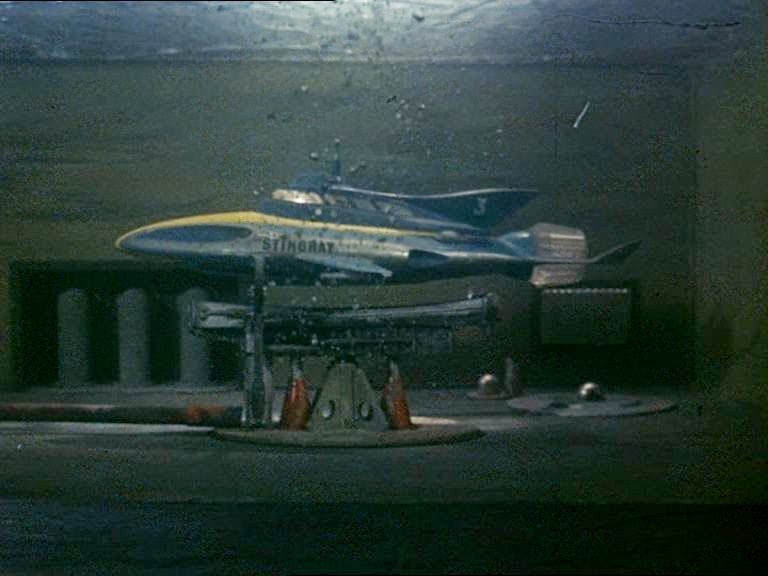The Krotons was the fourth serial in season six of Doctor Who and originally aired in late 1968 and early 1969. This four-parter is one of the few Second Doctor serials to survive in its entirety. It illustrates some of the strengths and weaknesses of the series at that time.
This was the first Doctor Who story penned by Robert Holmes who would go on to write much better stories for the series.
The Doctor, Jamie and Zoe arrive in an unnamed planet inhabited by a humanoid race called the Gonds. The Gonds are not however the rulers of the planet. They are held in absolute subjection by the Krotons although no-one has ever seen a Kroton. The Krotons are assumed to live inside “the machine” and issue their instructions via a disembodied electronic voice or in writing. The Gonds are only allowed to learn what the Krotons teach them through their “teaching machines” in the Hall of Learning. Periodically the two most promising Gond students are selected to serve as companions to the Krotons. They disappear through a door and are never seen again. As we will later learn they are drained of their mental energies and then destroyed.
The arrival of the Doctor and his party precipitates a crisis. The Doctor and Zoe have much greater mental capacities than any of the Gonds and the Krotons intend to use their mental energies to achieve something they have been trying to achieve for a thousand years, but the Krotons are about to face a serious challenge to their rule.
It’s not a great story but it’s perfectly adequate. It’s the execution that is the problem. The sets are uninteresting and the costumes are dull although Zoe’s costume (apparently made from plastic-coated paper) is quite startling and rather appealing.
The Krotons must be among the most embarrassingly silly monsters in the whole history of Doctor Who. In the audio commentary Bobi Bartlett, who was responsible for the costumes, makes the valid point that the design of the Krotons should have been treated as a special effect rather than being left to the costume department. I’m sure she did her best on the pitiful BBC budget but the Krotons just don’t work at all. Even a small child would be more likely to react to them with laughter than with terror. Doctor Who was never given anywhere near the budget a science fiction series required. Most of the time the budgetary constraints are overcome by the sheer imagination and ingenuity of the technical staff but there were serials that did suffer very badly from the inadequate funding and this is one of them.
The acting is fine. Philip Madoc, who would go on to feature in many Doctor Who adventures, is the standout as the ambitious and unscrupulous Eelek. Madoc steals every scene he’s in, as he always did.
I have mixed feelings about Patrick Troughton as the Second Doctor. I appreciate the fact that he was trying to make his interpretation of the role as different as possible from William Hartnell’s and I think that was a sound idea. Hartnell’s First Doctor was crotchety and rather arrogant so Troughton makes his Doctor whimsical, amiable and at times not entirely sure of himself. That’s all fine and good but for my tastes he overdoes the whimsicality just a little. I also feel the the Second Doctor is not quite alien enough compared to the First Doctor. The Doctor is not human and while he’s generally well disposed towards humans he is not one of us and he has his own agendas. This aspect of the Doctor’s character seems to me to be under-emphasised by Troughton.
Jamie (Frazer Hines) is always fun and he gets a pretty reasonable fight scene in the opening episode of The Krotons. While the Doctor generally prefers to avoid violence, and in particular avoids engaging in violence himself, he was never a pacifist and Jamie’s fight is a good example of the Doctor’s philosophy towards violence. He is quite prepared to let others resort to violence when its necessary. In this serial the Doctor is also quite prepared to encourage the Gonds in violent resistance to the Krotons.
Brian Hodgson's sound design (which takes the place of conventional incidental music) is a highlight.
As usual the BBC’s DVD presentation is excellent with a worthwhile audio commentary and some good documentary features.
As usual the BBC’s DVD presentation is excellent with a worthwhile audio commentary and some good documentary features.
The Krotons is by no means a complete failure and it’s better than its dubious reputation might suggest. All it needed was a bit more money to make the Krotons convincing and a bit more inspiration from the set designer. There are some amusing dialogue exchanges between the Doctor and Zoe, some reasonable ideas and there’s Philip Madoc in fine form, all of which are enough to make it worth a look.











